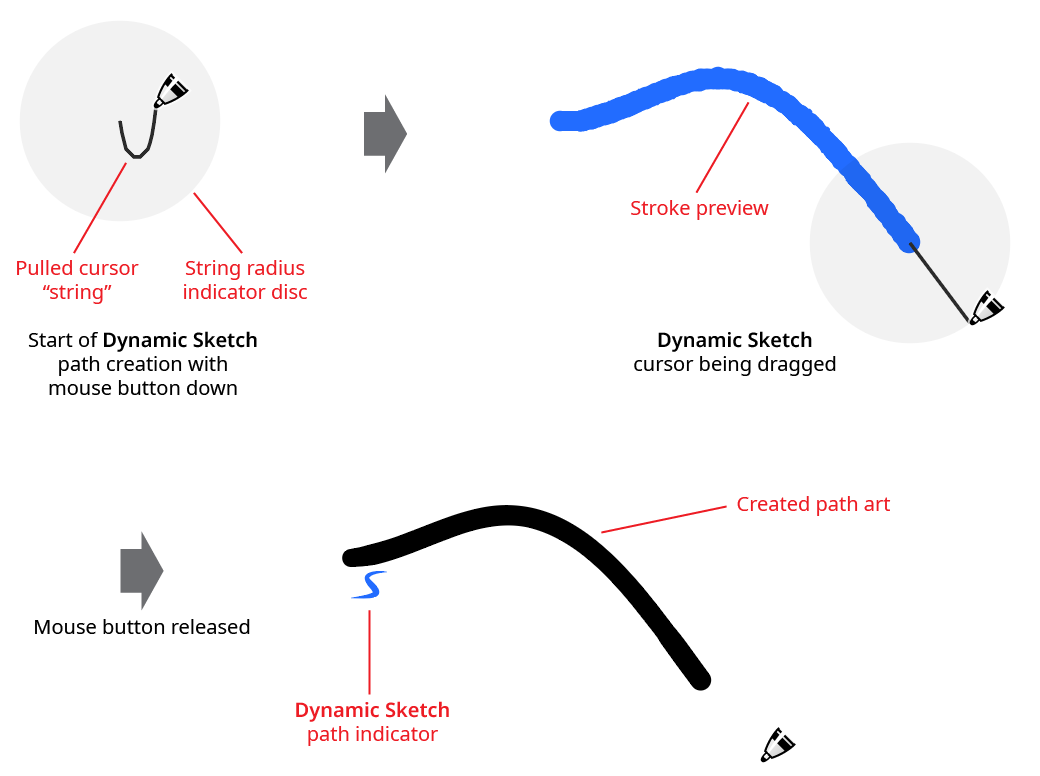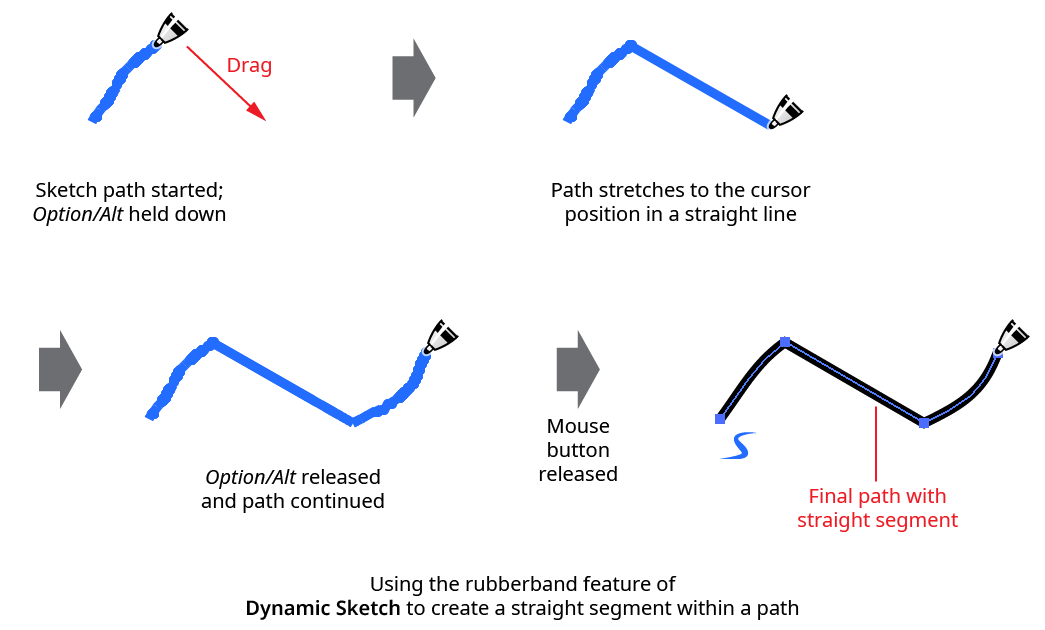 Dynamic Sketch Tool Operation
Dynamic Sketch Tool Operation
As the Dynamic Sketch tool has several keypresses which can add or change its functionality, we suggest installing the free Astute Graphics plugin Astute Buddy, which creates a panel that dynamically updates to inform you of the various keys which can be pressed in the tool’s current context.
Nearly all the functionality of the Dynamic Sketch tool is controlled by the associated Dynamic Sketch panel, which should be open and accessible.
At its most basic, the Dynamic Sketch tool is a direct replacement for the native Pencil tool: dragging the tool on the artboard creates a trail of points, referred to here as a “sketch path.” By default, the cursor is pulled by a “string” which is 50 pixels long, which creates smoother paths. When the mouse button is released, the points are converted to a path using various settings which determine how faithfully the path should conform to the original input points, whether anchor points are automatically created at horizontal and vertical tangencies, and so on. The new path’s style depends on several settings as well. By default, the path will have a stroke of variable width (ranging from 0 to 8pt), with the stroke weight determined by the speed that the cursor was moved across the artboard (faster speeds equating to a thinner weight). As the path is being drawn, the weight of the stroke will, by default, be previewed on the screen.

Dynamic Sketch Basic Example
Generally, Dynamic Sketch paths remain “live” after creation: their smoothness, accuracy, and stroke weight input parameters can be freely changed using the Dynamic Sketch panel controls to update the artwork. A path which is a live Dynamic Sketch path will, by default, have a small blue “S” icon annotated by the start of the path. If the path is not selected, the icon will be dimmed.
The default behavior of the tool is to allow editing, continuing, and joining paths. In each of these cases, the tool’s cursor will display a small “links” badge next to it to indicate that dragging it from the current point will not create a new path, but will instead edit, continue, or join the existing path, which can be a Dynamic Sketch path or a path created by another tool.
If the cursor is dragged from a spot along an existing path, the path will be edited to have a new shape:

Dynamic Sketch Edit Path
If the cursor is dragged from an endpoint of an existing path, the path will be continued, with a new section added:

Dynamic Sketch Continue Path
Finally, if the cursor is dragged from one endpoint of an existing path to another endpoint, the path will be joined to another path (an open path can also be closed by connecting its endpoints):

Dynamic Sketch Join Path
When joining one path to another and their stroke widths are different, the width will be blended in an attempt to join them smoothly. Tolerance values for determining how close the cursor must be to edit, continue, or join can be set in the preferences.
While dragging the tool to create a path, several keys may be pressed to held down for additional options:
Esc: Aborts the path currently being drawn.
Option/Alt: Starts a “rubberband” section – a completely straight section of path that stretches between the point at which the modifier key was held down and the point at which it is released:

Dynamic Sketch Rubberband Example
Shift: When creating a rubberband section, constrains the rubberband to angles that are 45° increments around the general constrain angle.
Up Arrow/Down Arrow: Lengthens or shortens the pulled cursor string length.
C: Changes the annotation color among the following choices: blue (default), red, magenta, green, cyan, and black.
E: Toggles Edit/Continue/Join mode (discussed previously).
M: Toggles annotation mirroring (see Dynamic Sketch: Preferences).
S: Toggles stroke width preview (see Dynamic Sketch: Preferences).
Other features and operations of the Dynamic Sketch tool are discussed in conjunction with the Dynamic Sketch panel, below.
